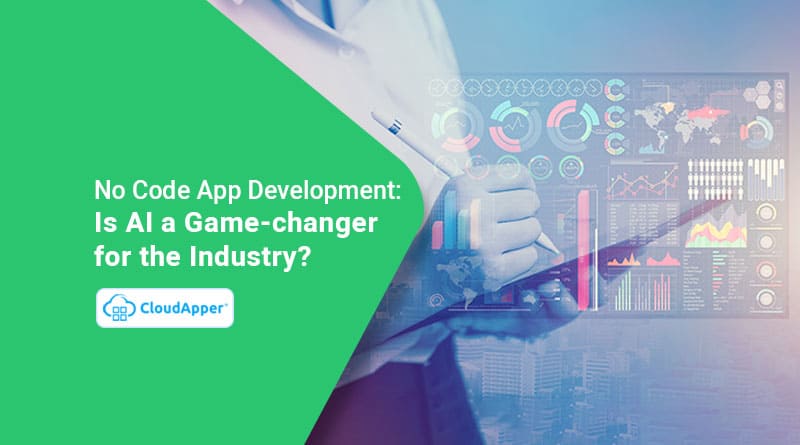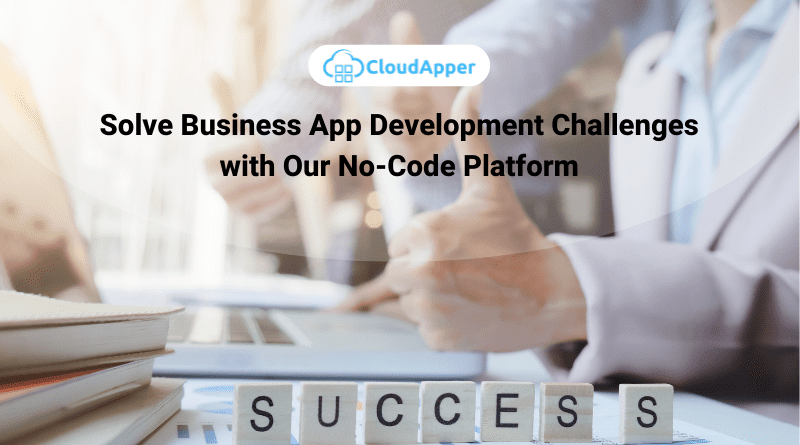No-code platforms, which free up skilled developers to work on other projects, have come a long way in the last several years. However, can they be used effectively in the creation of AI applications, which are becoming increasingly complex?
Enterprises will leverage no-code resources in 70 percent of new app development, according to Gartner. Only a quarter of all new applications will be produced this way in 2020. According to Garner, 75 percent of big organizations will be using no-code technologies for IT app and citizen development by 2025.
In the race to become the most popular no-code platform for organizations, there are many contenders. CloudApper has a no-code AI platform for AI and machine learning application deployments. CloudApper, a no-code platform for creating enterprise-level mobile apps, is just one of several firms making their mark in this sector.
Now that low-code has been widely adopted, we should pay attention to how artificial intelligence (AI) may play a role in no-code development, particularly through generative AI, which might help with application development, testing, and quality improvement. The next round of no-code advancements will take place here.
It’s Early Days for AI in No-Code
AI in no-code is still in its infancy, although major companies like Microsoft are pouring money into it. Customers’ data models and user interface components are anonymized as a result of products that use artificial intelligence to assess all of the numerous apps produced on a platform. This may be used to provide enterprises with guidance on application development and better utilization of their data.
Traditional application development sometimes necessitates the possession of a specific set of skills. Several factors may have contributed to the broad adoption of digital business units by enterprises that confront talent and resource shortages in the IT and software engineering fields. From a business standpoint, the epidemic has been a tidal wave that has raised all no-code boats
This tendency was spurred by the pandemic’s need to address some of the issues that occurred. IT teams realized that they need to move faster and more swiftly than traditional coding techniques allow. It is possible for a firm to create applications using a no-code platform and know that the apps will need to be updated or replaced in a few years. The firm may not be able to exist if it does not deploy.
It’s no longer simply a single no-code tool that’s being used in companies. More than one no-code tool is available. The likes of Salesforce, Microsoft, ServiceNow, Oracle, and SAP all provide no-code technologies.
The Internet of today is not the same as the Internet of five years ago.
Just four or five years ago, no-code platforms seemed like an experimental or tactical alternative for generating new apps. To avoid yet another SaaS purchase, [organizations] could consider developing their own. This may have been used as a prototype for the app to be developed in AWS, Azure, or Google Cloud Platform. Modernization and re-platforming no longer involve writing any code. CloudApper, for example, maybe utilized if a company has to transfer a monolithic legacy application to the cloud. All but a few of the no-code platforms have either already gone to the cloud or are cloud-native in some way or another. Serverless functions and DevOps can all be supported, as can running on containers.
C-suite and other executives’ growing understanding of no-code may be part of a larger shift in the way businesses solve their problems. In Gartner’s 2022 Board of Directors Survey, 40% of boards reported that they are allowing greater technology funding to be used for digital projects in the lines of business. No-code is one of the main methods business units will develop their apps, automation, data models, and algorithms—all of which they need in order to solve their business issues.


















